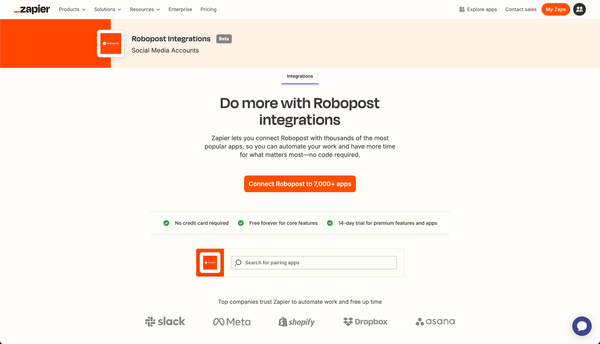Navigating the Challenges of Social Media Automation
Explore the balance between AI automation and human touch in social media strategy to enhance engagement and authenticity.

Using Artificial Intelligence (AI) for automation can be both helpful and challenging. While it can make things more efficient and boost engagement, it can also hurt the authenticity and effectiveness of social media strategies. This article explores the complexities of social media automation, highlighting the need to keep a human touch, balance automation with human interaction, adapt to different platforms, manage misinformation, and optimize time management. Understanding these challenges is crucial for marketers who want to use AI without losing the personal connection that is essential to social media.
Key Takeaways
- Integrating AI into social media needs a balanced approach that combines automated efficiency with the irreplaceable value of human touch.
- Each social media platform's unique culture and demographics require tailored automation strategies to ensure relevance and engagement.
- The rise of AI in social media calls for strong verification processes and ethical standards to combat misinformation and maintain trust.
- Effective time management in AI-driven social media involves using automation for routine tasks while prioritizing human-led content creation for quality.
Understanding the Human Element in AI-Driven Social Media

The Importance of Human Oversight
In AI-driven social media, the appeal of automation can sometimes overshadow the need for human oversight. Human involvement is crucial to ensure the AI aligns with the brand's values and operates ethically. Over-reliance on automation can create a disconnect, where AI may not act in the brand's best interest without human monitoring and guidance.
Ethical considerations are crucial when using AI in social media strategies. Being transparent about using AI, especially in handling customer data, is essential to build trust and maintain strong customer relationships. Common challenges when integrating AI without enough human oversight include:
- Customization limitations that fail to humanize content
- A management gap due to lack of connection across departments
- Unrealistic expectations leading to consistent failures
- The potential for spreading misinformation without proper checks
Addressing these challenges requires a thoughtful approach to integrating AI with a human touch, ensuring that technology serves as an extension of the human team, not a replacement.
Balancing Automation with Authenticity
In social media, authenticity is crucial for building genuine connections with your audience. Automation can make things easier, but it's important to add a personal touch to automated content to keep it from feeling robotic.
- Personalize your content by refining AI-generated material with your expertise.
- Balance automated posts with real-time interactions to keep a lively and authentic presence.
- Customize AI to understand context, tone, and nuances, ensuring a humanized approach.
While automation offers many benefits, it's important to balance automated and organic interactions. Over-relying on automation can lead to a lack of control and may not always produce the best results without human monitoring and guidance.
Customizing AI to Reflect Brand Personality
In social media, AI's ability to mimic human interaction is crucial. Customizing AI to reflect a brand's personality involves more than just programming responses; it's about infusing AI with the brand's voice and values. This ensures each interaction feels personal and authentic, connecting with the audience on a deeper level.
To achieve this, brands must first understand their own identity. Here's a simple list to guide the process:
- Define your brand's core values and voice.
- Translate these elements into AI interactions.
- Continuously refine AI behavior based on user feedback.
It's important to regularly monitor and adjust AI behavior. The social media landscape changes quickly, and what works today might not work tomorrow. Keeping AI aligned with your brand requires vigilance and a willingness to evolve.
Adapting to Platform-Specific Nuances

Recognizing Each Platform's Unique Culture
Social media platforms have become unique communities, each with its own culture and user expectations. Marketers need to understand these differences to connect effectively with their audience. For example, Instagram's casual and visual style requires a different approach than Twitter's concise and timely interactions.
- Facebook is popular for its wide demographic and preference for detailed storytelling.
- Instagram users like visually appealing content and temporary Stories.
- Twitter thrives on real-time updates and brief messages.
- LinkedIn is focused on professional networking, industry insights, and career development.
Using automation wisely is important; while it can make routine tasks more efficient, it's crucial to keep the personal touch that creates genuine connections. Ignoring platform-specific best practices can lead to poor engagement and disconnect with the audience.
Customizing Content to Platform Demographics
To effectively engage with different audiences, content must be tailored to the unique demographics and cultural norms of each social media platform. Understanding the preferences and behaviors of each platform's user base is crucial for maximizing your social media strategy's impact.
- On Instagram, using visually-driven content like Stories can greatly boost user engagement.
- Facebook's environment is good for longer-form content and live sessions, creating a sense of community.
- Twitter's fast-paced nature requires concise, impactful messages that quickly resonate with its users.
It's important to recognize that what works on one platform may not work on another. Continuously experimenting with content formats and tracking engagement metrics allows for quick adjustments in the ever-changing digital landscape.
Avoiding One-Size-Fits-All Automation Strategies
In social media, using automation requires a nuanced strategy that respects the unique culture and user expectations of each platform. Automating routine tasks can improve efficiency, but it's vital to maintain your brand's distinct voice and interactive style across all social channels.
- Twitter: Quick responses, hashtags, and trending topics.
- Facebook: Community engagement, longer posts, storytelling.
- Instagram: Visual content, stories, direct interaction.
- LinkedIn: Professional tone, detailed content, networking.
Relying too much on automation can disconnect you from your audience. It's crucial to strike a balance where AI supports human judgment and preserves brand authenticity. Personalizing content and engaging in real-time are crucial for building a genuine connection with your community.
Managing Misinformation in the Age of AI

Combating the Spread of Fake News
Fighting the spread of fake news is a major challenge for AI-driven social media automation. Effective strategies are needed to ensure that shared information is accurate and trustworthy.
One approach is to improve the AI's ability to spot and flag suspicious content. This involves training algorithms on large datasets of verified information so they can recognize patterns linked to misinformation. Social media platforms can also use a mix of AI and human fact-checkers to verify content before it spreads widely.
By focusing on the accuracy of information, we can create a more informed and responsible online community.
Ensuring AI Ethical Standards
In social media automation, ensuring AI follows ethical standards is crucial. Ethical AI use is not just a legal requirement but also key to user trust and brand integrity. UNESCO's principles on AI ethics stress that AI systems must respect human rights and not exceed necessary limits to achieve their goals.
To maintain ethical standards, follow these steps:
- Regularly audit AI algorithms to find and fix biases.
- Set clear policies on data privacy and user consent.
- Give users the option to opt-out of AI-driven interactions.
- Ensure transparency in AI operations and decision-making.
As AI evolves, staying informed and flexible is essential. Marketers must be vigilant, continuously updating their practices to meet new ethical standards and societal expectations.
Implementing Verification Processes
In the digital age, trust is crucial. Social media platforms must focus on strong verification processes to ensure user accounts and content are real. Human verification means confirming that a real person, not a bot, is behind a social media account. This can range from simple email verification to complex multi-factor authentication.
Effective verification processes prevent bots and help fight misinformation, maintaining the platform's integrity. Clear verification protocols create a more trustworthy environment for users.
To implement a successful verification process, follow these steps:
- Start with designing simple verification prototypes.
- Gradually implement these prototypes, improving them based on user feedback.
- Ensure collaboration between users and the software team from the beginning.
- Use software-defined workflows to quickly express concepts and make iterative improvements.
Time Management and Efficiency in Social Media Tasks

Leveraging AI for Time-Intensive Activities
In social media, AI plays a crucial role in changing how we manage our digital interactions. By automating tasks like scheduling posts with tools like Robopost, AI boosts efficiency and keeps our online presence consistent.
For example, AI can write and select content, suggest the best times to post based on follower activity, and help with hashtag selection. This reduces the time spent on content creation and maximizes the impact of each post.
Here are some ways to use AI in social media:
- Automate post creation to generate catchy captions and messages.
- Find the best times to post for maximum engagement.
- Manage customer interactions to keep a responsive brand image.
By using AI, businesses can focus more on strategic planning and creative work, making sure their social media strategy matches their brand personality and meets audience expectations.
Prioritizing Human-Led Content Creation
While AI can boost content production and performance, social media's main appeal is its human element. Authenticity and a personal touch are irreplaceable and resonate deeply with audiences. AI-generated content often needs a human editor to add personality and match the brand's voice.
- Review AI-generated content for authenticity
- Edit to reflect the brand's unique personality
- Add expert insights and personal stories
Engaging with your audience in real-time by promptly responding to comments and messages is crucial. This interaction can't be fully automated and is essential for building a loyal community. Personalizing content to match audience preferences and current trends can significantly increase engagement and sharing.
Evaluating AI Performance and Time Savings
In social media, AI can save time and money by handling tasks that usually take a lot of time. This allows businesses to focus more on strategic and creative efforts.
To evaluate AI's performance and time savings, track these metrics:
- Hours saved per week on automated tasks
- Percentage increase in engagement from timely and consistent posting
- Reduction in response time to user inquiries
- Cost savings from needing fewer human moderators
Regularly monitor and adjust AI systems to keep them effective and aligned with the brand's social media strategy. By measuring impact and making data-driven decisions, businesses can optimize AI use for maximum benefit.
Conclusion
Managing social media automation challenges requires a balanced approach that uses AI for efficiency while keeping the essential human touch. Over-automation can make content feel impersonal, and not considering platform-specific details can weaken your strategy. To succeed, marketers should combine automated tools with human oversight, ensuring content stays authentic and connects with the audience. By being aware of these challenges and using a mixed approach, businesses can use social media automation to improve their online presence without losing quality or personal connection.
